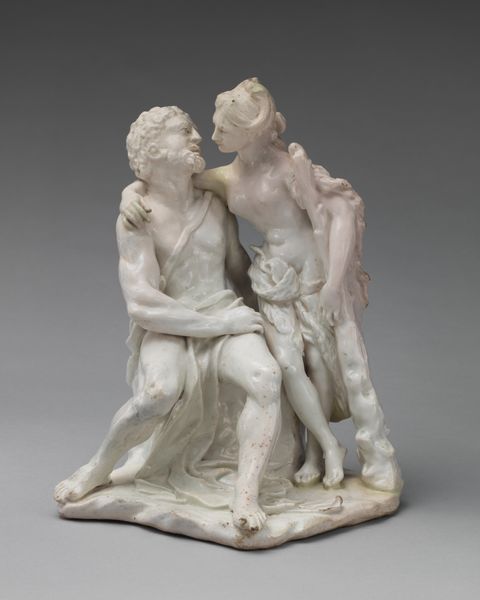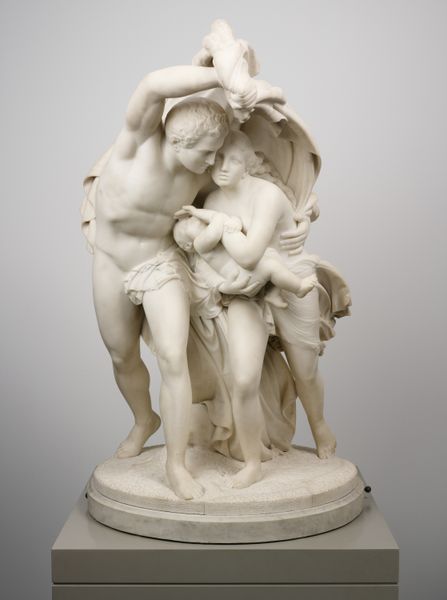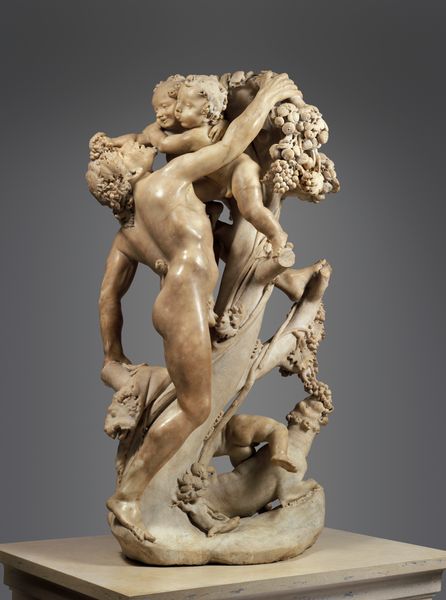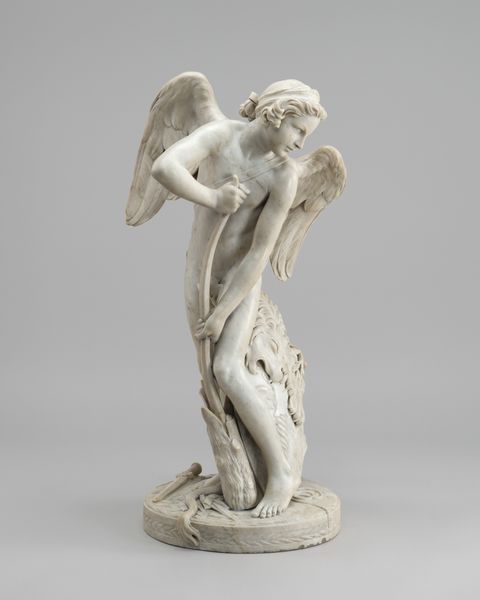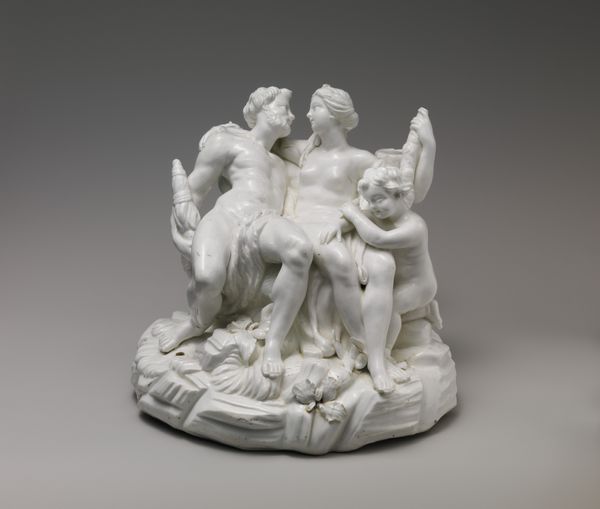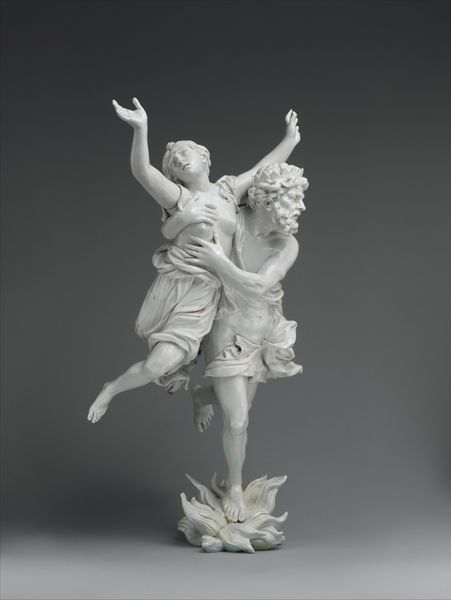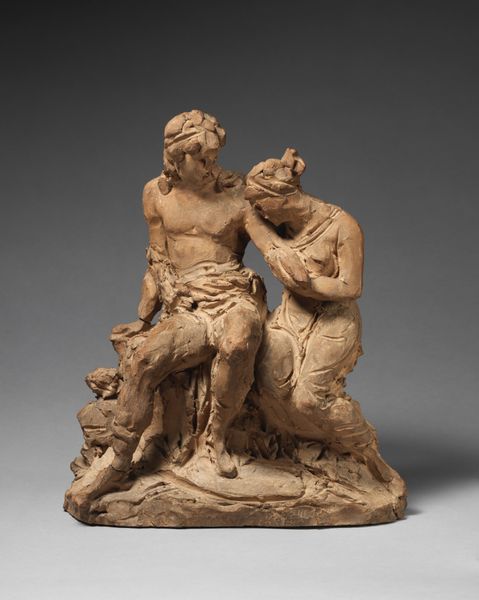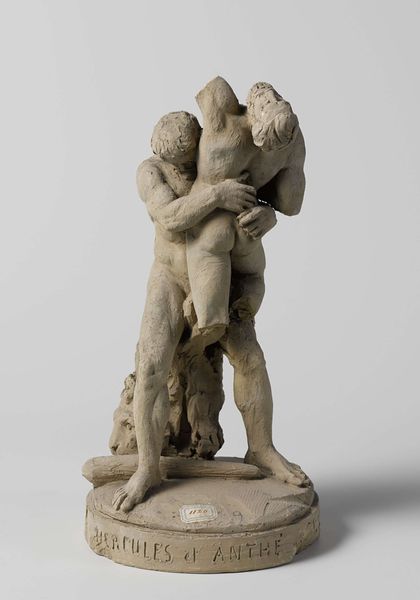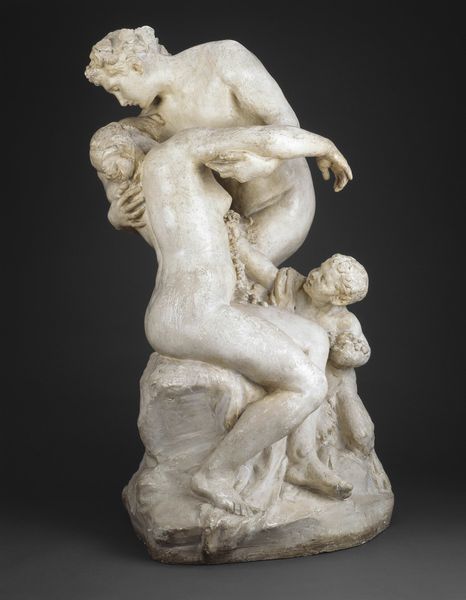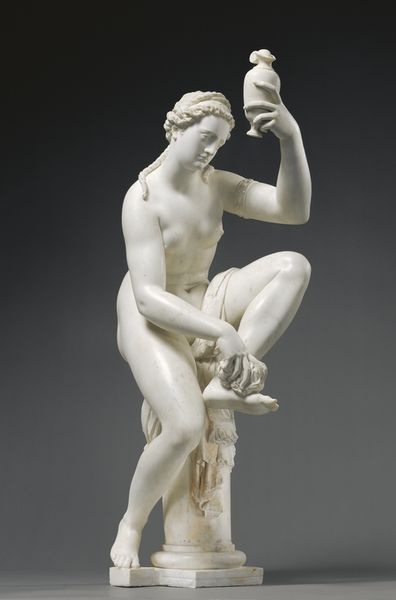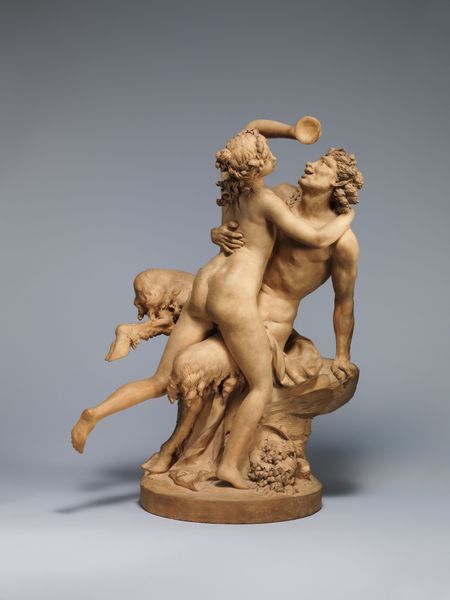
bronze, sculpture
#
allegory
#
baroque
#
sculpture
#
bronze
#
figuration
#
sculpture
#
erotic-art
Dimensions: overall: 37 x 25.4 x 22 cm (14 9/16 x 10 x 8 11/16 in.)
Copyright: National Gallery of Art: CC0 1.0
Curator: Giuseppe Piamontini's bronze sculpture, "Venus and Cupid," dates from around 1711 to 1724, offering a glimpse into the Baroque era's artistic sensibilities. What strikes you about it? Editor: Oh, immediately the sinuous quality! Venus’s skin shimmers even rendered in dark bronze. The Baroque love of curves and dynamism is here in full force, with Cupid mid-gesture like that! Curator: Right, consider the materiality: bronze, cast using the lost-wax method. We see how Piamontini exploits the malleability of wax, enabling him to chase those minute details before it becomes the lasting medium, and making us consider the foundry where the real physical labor took place. It’s not only bronze; it is human labor and exploitation of natural resources rendered into cultural product. Editor: Well said! And it makes me consider how artists interpret ancient myths—in a fresh, sometimes surprising, way. Venus here is solid, almost earthy; her face doesn't express the delicate emotion we might expect of a goddess. Curator: Indeed, baroque art often used classical mythology for erotic or allegorical statements. But, there's also a commercial exchange that goes into sculptures like this; the bronze commodity traded in the market, purchased by the elite… Editor: Definitely. Despite this art being about a supposed ‘ideal’ there is always a buyer involved. Although Piamontini might have never known who that was, so many different people would engage in different ways to get the materials and make it. Curator: So the act of making this image is tied with complex relations. Its status today hinges on access, preservation, conservation... it's almost impossible to distill any cultural object into pure artistic creation free of that reality. Editor: You've offered a sobering perspective! From my own more immediate experience, it suggests human emotion frozen in material but activated and animated as we imagine the myths and hands that created it.
Comments
No comments
Be the first to comment and join the conversation on the ultimate creative platform.

